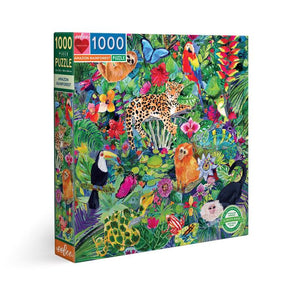
Tips and Tricks for Puzzles
Jigsaw Puzzle Tips and Tricks
Puzzling has become a favorite pastime as we’re hunkering down at home with limited options for entertainment. Puzzles are considered a complete brain exercise since they use both the left and right sides. Whether your new to the hobby or a puzzling expert, there are strategies to help you complete your puzzle and eliminate the frustration that often comes with this hobby. Here are a few of our favorite tips:
1. Choose the size of puzzle that matches your ability. The 3000 piece puzzle may look intriguing, but if you’re a beginner (or not!) a 500 piece may be a good place to start. Our brains like challenges, but not impossible ones. Consider the age and ability of those working on it in as well, before deciding the complexity. Build up your skill level before taking on the expert-level puzzle.
2. Select the right workspace. Make sure you have ample room for your finished puzzle, as well as workspace for the pieces you’re working on outside the edges. A 1000 piece puzzle is usually about 20” x 27”, so you’ll need a 3-5 foot space. A dining table, countertop or card table are all good options. Just make sure it’s a place that the puzzle can “live in” until it’s completed.
3. Sort the pieces. Spread all the pieces out immediately and flip them right side up. Sort by color, grouping pieces of images or colors as you can. For example, if you have a landscape, collect the pieces of the sky together, and the pieces of the buildings, etc.
You may want to sort even further by also organizing pieces by SHAPE. For example, if the puzzle has a blue sky, continue separating all the blue pieces into piles of “two holes” or “two knobs.” They are easier to match when you can visualize the negative space.

4. The Edges. Group all the pieces together with a flat side to build your frame. Completing the frame first helps you see the size of the puzzle and gives you a defined space to work within while you build.
5. Special Pieces. Some pieces will be easily identified as to where they go. Many puzzles have whimsies – special shapes like people or animals, scattered throughout the rest of the jigsaw shapes. Keeping the odd shaped pieces separate will make them easy to spot where it goes once the assembling begins.
6. Use good lighting. Puzzles are easiest to construct during daylight hours and by a window. If you need additional lighting for night work, LED lights are best for seeing the variances in color.
7.Have Fun!!!
*Information for this article was taken from the Puzzle Warehouse.
.


